nf-core/crisprseq
A pipeline for the analysis of CRISPR edited data. It allows the evaluation of the quality of gene editing experiments using targeted next generation sequencing (NGS) data (targeted) as well as the discovery of important genes from knock-out or activation CRISPR-Cas9 screens using CRISPR pooled DNA (screening).
1.0). The latest
stable release is
2.3.0
.
Introduction
This document describes the output produced by the pipeline. Most of the plots are taken from the MultiQC report, which summarises results at the end of the pipeline.
The directories listed below will be created in the results directory after the pipeline has finished. All paths are relative to the top-level results directory.
Pipeline overview
The pipeline is built using Nextflow and processes data using the following steps:
- Preprocessing
- Sequences - Input sequence preparation (reference, protospacer, template)
- cat - Concatenate sample fastq files if required
- Pear - Join double-end reads if required
- FastQC - Read Quality Control
- Adapters - Find adapters (Overrepresented sequences) in reads
- Cutadapt - Trim adapters
- Seqtk - Mask low-quality bases
- Mapping
- Edits calling
- CIGAR - Parse CIGAR to call edits
- MultiQC - Aggregate report describing results and QC from the whole pipeline
- Pipeline information - Report metrics generated during the workflow execution
Preprocessing
Sequences
Output files
preprocessing/sequences/*_reference.fasta: Sequence used as a reference.*_template.fasta: Provided template sequence.*_correctOrient.fasta: Reference sequence in the correct orientation._NewReference.fasta: New reference generated from adding the changes made by the template to the original reference.*_template-align.bam: Alignment of the new reference (with template changes) to the original reference.
Contains the input sequences (reference, protospacer and template). Sequences are preprocessed as required:
- The reference is returned in the correct orientation.
In order to provide the reference in the correct orientation, the protospacer is searched in the reference sequence. The reverse complement is returned if the protospacer matches the reference in reverse complement.
- The template is used to obtain a new reference with the expected changed.
cat
Output files
preprocessing/cat/*.merged.fastq.gz: Concatenated fastq files
If multiple libraries/runs have been provided for the same sample in the input samplesheet (e.g. to increase sequencing depth) then these will be merged at the very beginning of the pipeline in order to have consistent sample naming throughout the pipeline. Please refer to the usage documentation to see how to specify these samples in the input samplesheet.
Pear
Output files
preprocessing/pear/*.assembled.fastq.gz: Assembled paired-end reads*.discarded.fastq.gz: Discarded reads*.unassembled.forward.fastq.gz: Unassembled paired-end reads - forward (R1)*.unassembled.reverse.fastq.gz: Unassembled paired-end reads - reverse (R2)
PEAR is a pair-end read merger.
FastQC
Output files
fastqc/*_fastqc.html: FastQC report containing quality metrics.*_fastqc.zip: Zip archive containing the FastQC report, tab-delimited data file and plot images.
FastQC gives general quality metrics about your sequenced reads. It provides information about the quality score distribution across your reads, per base sequence content (%A/T/G/C), adapter contamination and overrepresented sequences. For further reading and documentation see the FastQC help pages.
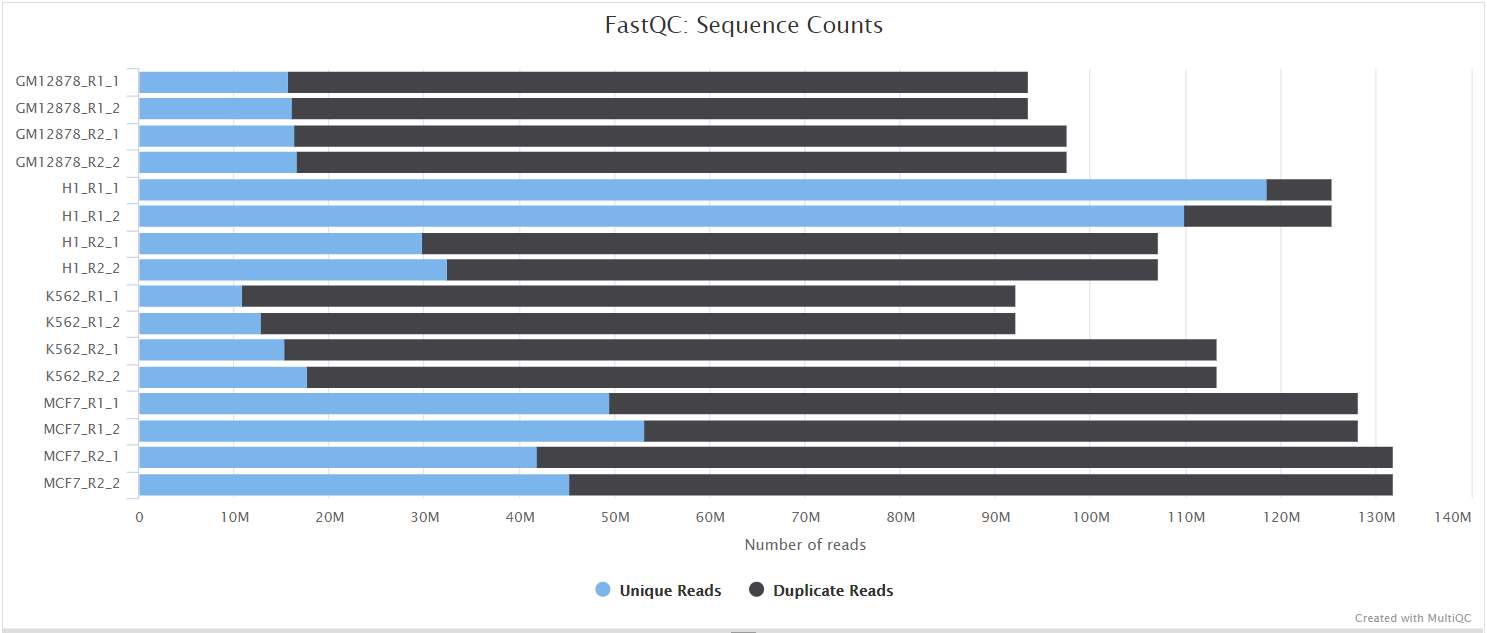
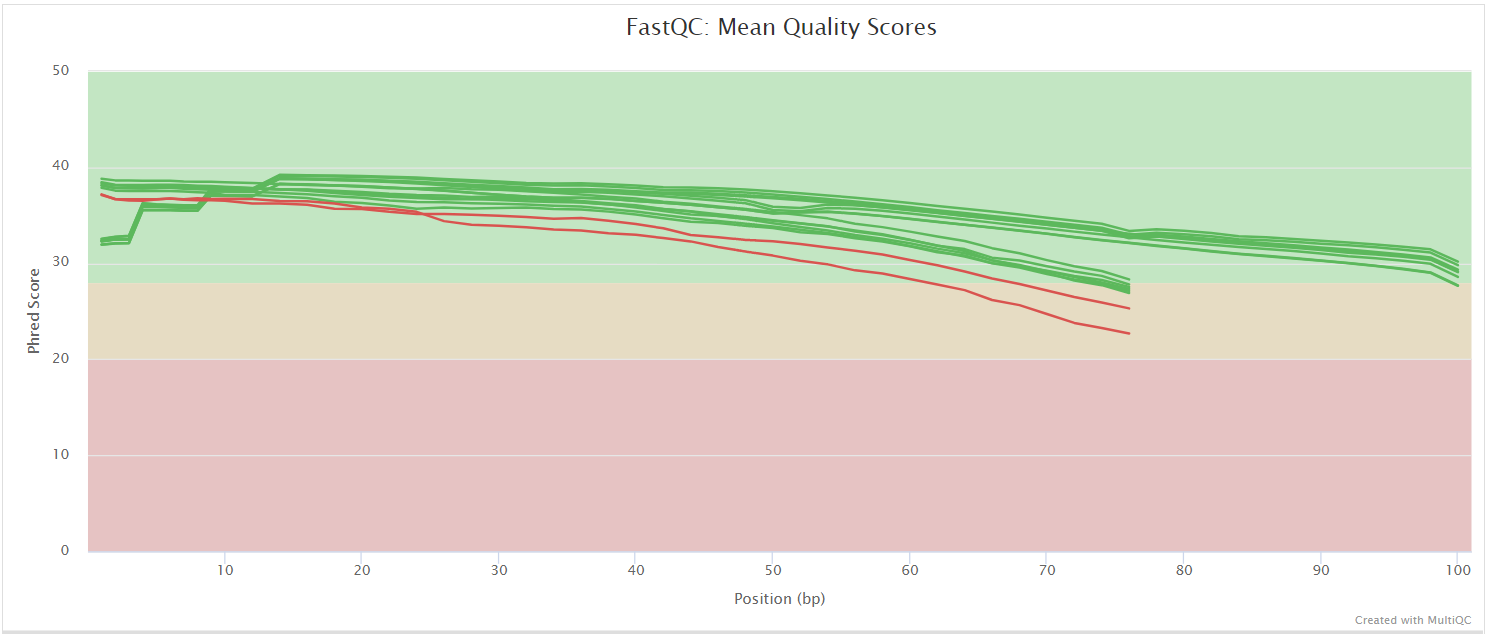
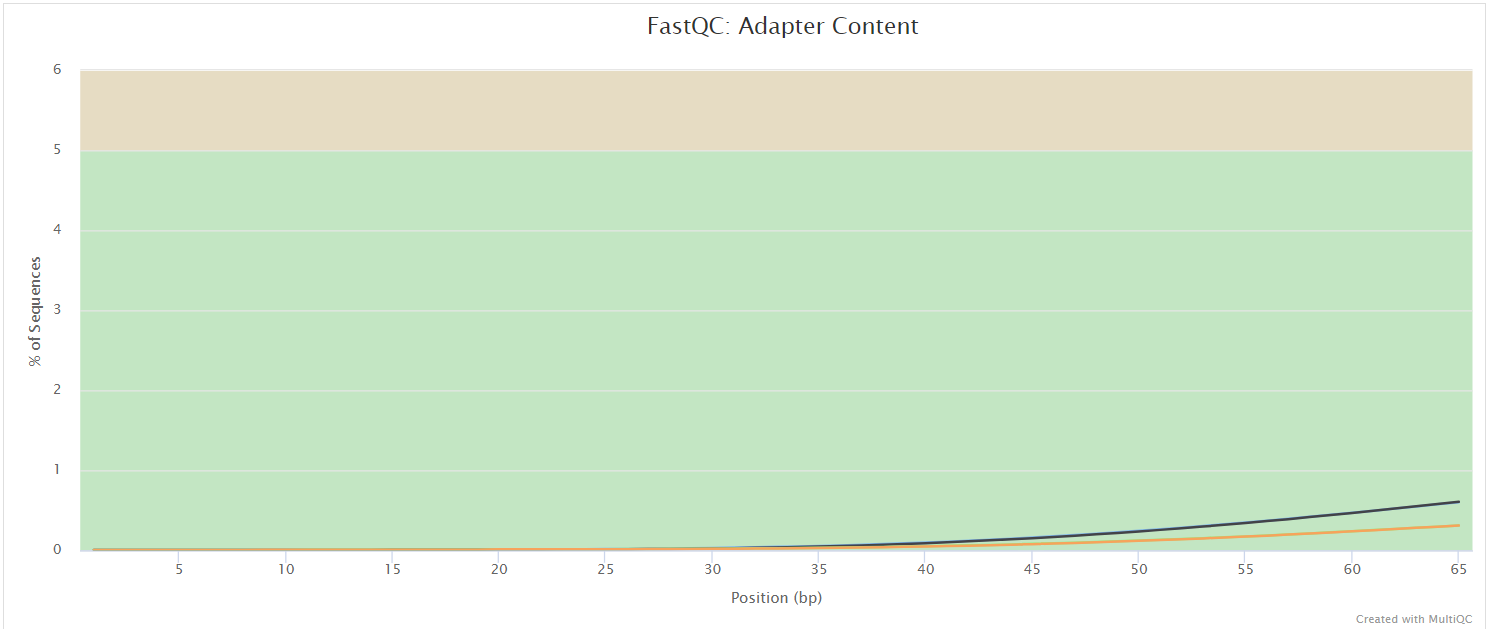
NB: The FastQC plots displayed in the MultiQC report shows untrimmed reads. They may contain adapter sequence and potentially regions with low quality.
Adapters
Output files
preprocessing/adapters/*_overrepresented.fasta: Contains overrepresented sequences found by FastQC
FastQC finds over-represented sequences in samples. It lists all of the sequence which make up more than 0.1% of the total reads. For each over-represented sequence the program will look for matches in a database of common contaminants and will report the best hit it finds. Hits must be at least 20bp in length and have no more than 1 mismatch.
Cutadapt
Output files
preprocessing/cutadapt/*.cutadapt.log: Cutadapt log file*.trim.fastq.gz: Sample reads trimmed with overrepresented sequences removed
Seqtk
Output files
preprocessing/seqtk/*.seqtk-seq.fastq.gz: Quality filtered reads.
Seqtk masks (converts to Ns) bases with quality lower than 20 and removes sequences shorter than 80 bases.
Mapping
minimap2
Output files
minimap2/*.bam: BAM file containing aligned reads*.bai: BAI index
Minimap2 is a sequence alignment program that aligns DNA sequences against a reference database.
BWA
Output files
bwa/*.bam: BAM file containing aligned reads*.bai: BAI index
BWA-MEM BWA is a software package for mapping low-divergent sequences against a reference genome.
bowtie2
Output files
bowtie2/*.bam: BAM file containing aligned reads*.bai: BAI index
Bowtie2 aligns sequencing reads to reference sequences.
Edits calling
CIGAR
Output files
cigar/*_cutSite.json: Contains the protospacer cut site position in the reference.*_edition.html: Interactive pie chart with the percentage of edition types. Reads are classified between WT (without an edit) and indels. Indes are divided between deletions, insertions and delins (deletion + insertion). Deletions and insertions can be out of frame or in frame.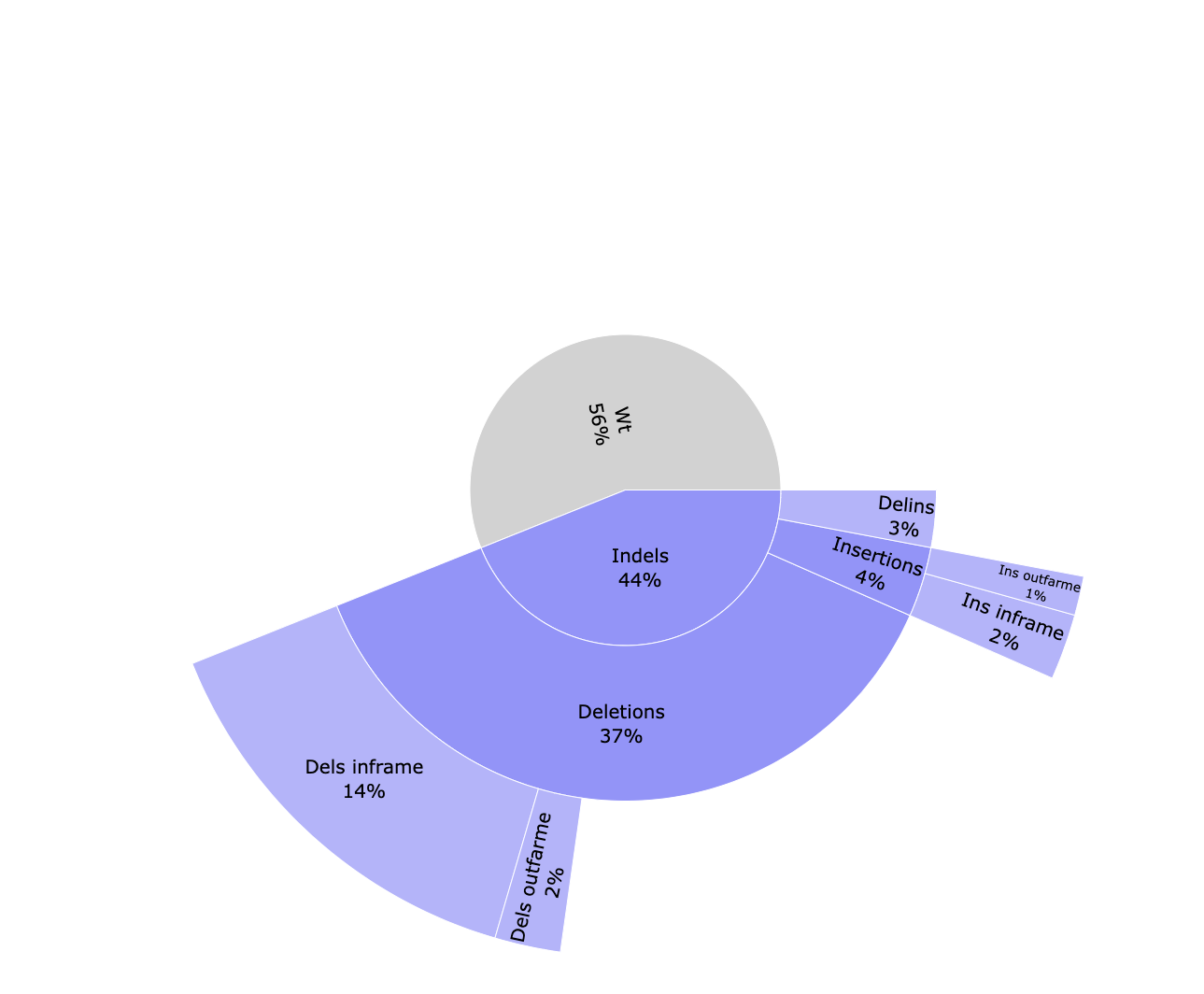
*_edits.csv: Table containing the data visualized in the pie chart.*_indels.csv: Table containing information of all reads. Edit type, edit start and length, if the edition happens above the error rate, if it’s located into the common edit window, the frequency, the percentage, the pattern, surrounding nucleotides in case of insertions, the protospacer cut site, the sample id, number of aligned reads and number of reads with and without a template modification.*_QC-indels.html: Interactive pie chart with information about aligned reads. Reads are classified between WT and containing indels. Both types are classified between passing the filtering steps or not. Indel reads passing the filtering steps are divided in reads with a modification above the error rate and located in the common edit window, above the error rate but not in the edit region, viceversa, or any of those conditions.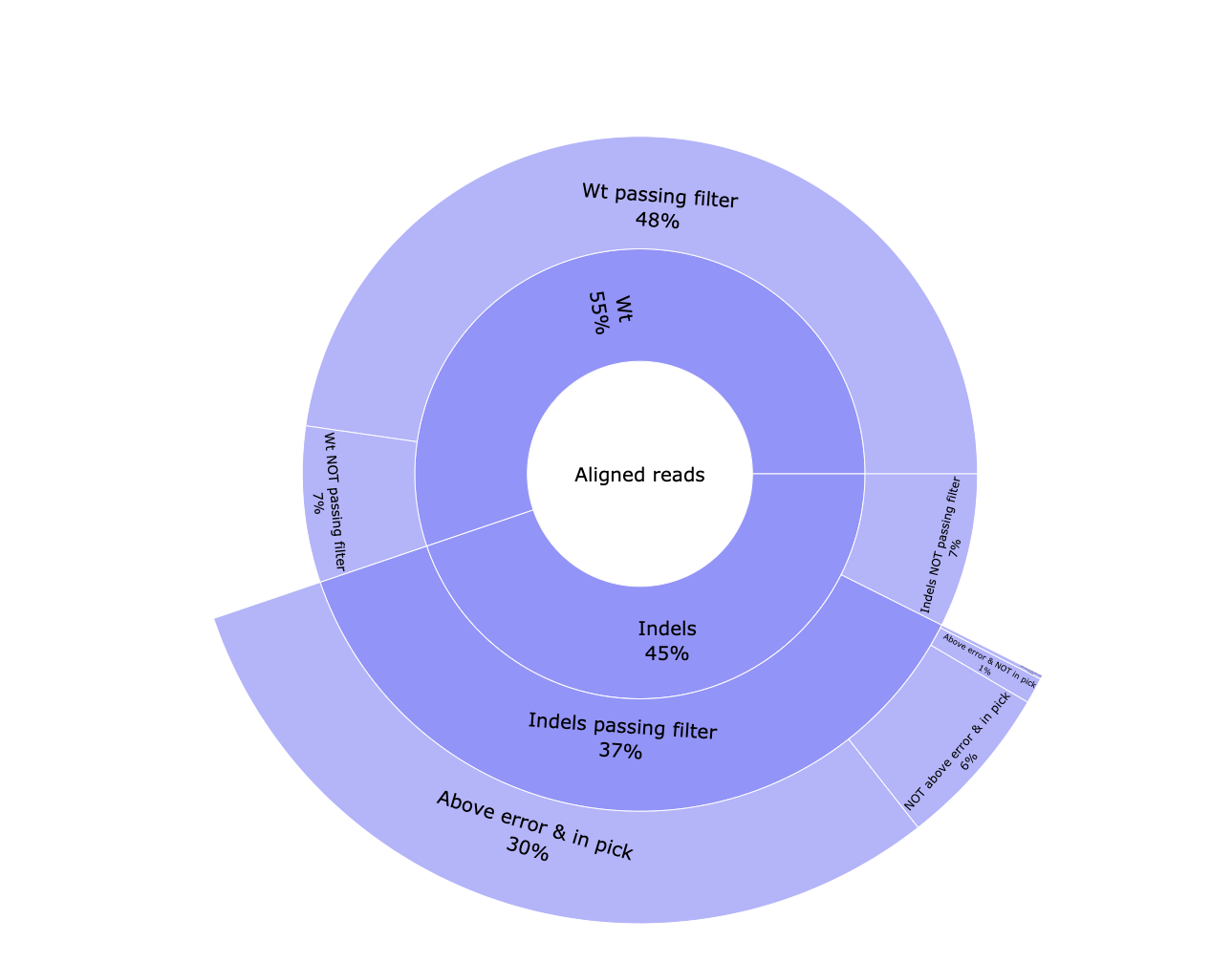
*_reads.html: Interactive pie chart with percentage of the number of raw reads, reads merged with Pear, reads passing quality filters and UMI clustered reads.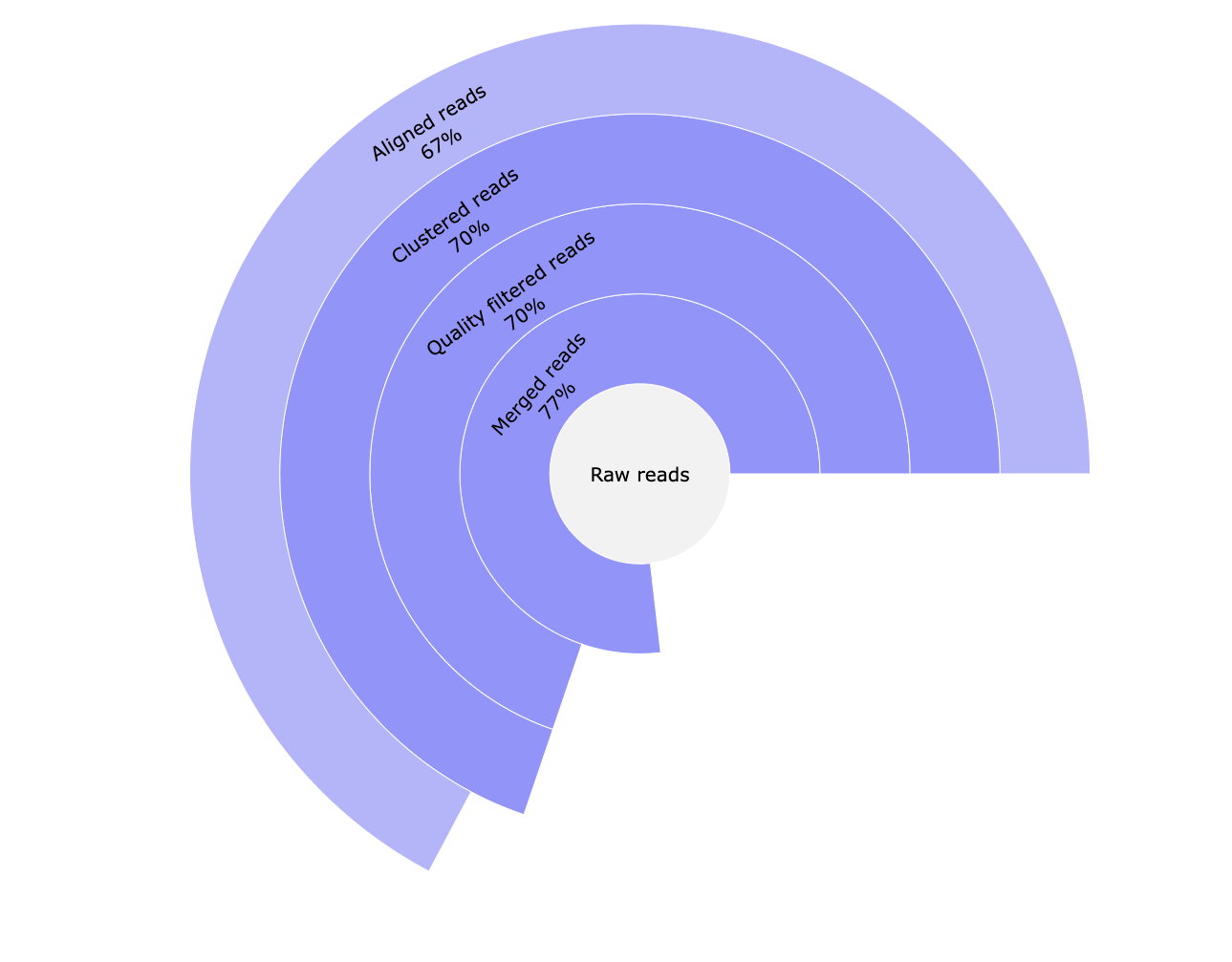
*_subs-perc.csv: Table containing the percentage of each nucleotide found for each reference position.
MultiQC
Output files
multiqc/multiqc_report.html: a standalone HTML file that can be viewed in your web browser.multiqc_data/: directory containing parsed statistics from the different tools used in the pipeline.multiqc_plots/: directory containing static images from the report in various formats.
MultiQC is a visualization tool that generates a single HTML report summarising all samples in your project. Most of the pipeline QC results are visualised in the report and further statistics are available in the report data directory.
Results generated by MultiQC collate pipeline QC from supported tools e.g. FastQC. The pipeline has special steps which also allow the software versions to be reported in the MultiQC output for future traceability. For more information about how to use MultiQC reports, see http://multiqc.info.
Pipeline information
Output files
pipeline_info/- Reports generated by Nextflow:
execution_report.html,execution_timeline.html,execution_trace.txtandpipeline_dag.dot/pipeline_dag.svg. - Reports generated by the pipeline:
pipeline_report.html,pipeline_report.txtandsoftware_versions.yml. Thepipeline_report*files will only be present if the--email/--email_on_failparameter’s are used when running the pipeline. - Reformatted samplesheet files used as input to the pipeline:
samplesheet.valid.csv.
- Reports generated by Nextflow:
Nextflow provides excellent functionality for generating various reports relevant to the running and execution of the pipeline. This will allow you to troubleshoot errors with the running of the pipeline, and also provide you with other information such as launch commands, run times and resource usage.